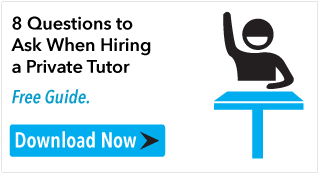Reading four lengthy passages and answering 40 questions in a short timespan of 35 minutes can seem overwhelming, especially if you are not familiar with the ACT Reading...
An Overview of the SAT Critical Reading Section

The verbal section of the SAT exam includes a section on critical reading. Reading “critically” means reading without simply accepting the text as fact. When you read a text critically, you are trying to evaluate the validity of the claims presented, recognizing that the author necessarily has experiences, biases, or prejudices that influence his or her views on the subject.
If the piece presented is an argument, the author's biases may influence the choice of material presented or excluded, and the relative importance accorded to each claim in the construction of the overall argument. Ultimately, you have to try as far as possible to separate the author's biases from the objective merits of the claim.
In narrative passages (stories), you may also be asked to infer the author's attitude to a person or event from the author's choice of words in describing that person or event.
As an extreme example, it is safe to assume that someone discussing abortion who refers to it as “the murder of an unborn child” is not of the same view as an author who frames the subject in terms of “a woman's right to choose.” While the former clearly considers abortion morally reprehensible, the latter instead views it as a personal choice with no implicit moral judgment.
The critical reading passages on the SAT will not deal with subjects as controversial as religious or political opinions. They will rather be drawn from literary fiction, humanities, social sciences, or natural sciences. In some cases a passage will be paired with another that has a related theme, and there may be questions that require you to compare the two. The passages will range in length from approximately 100 to 850 words. There is no fixed number of passages, though there will be a total of 48 questions on passage-based reading.
In addition, the test will contain 19 sentence-completion questions. These questions consist of a sentence containing one or more blanks, which you will complete by choosing the word or combinations of words that best fits the meaning of the sentence. The alternative that best fits the sentence is the one that makes the the sentence logical, grammatically correct, and internally consistent.
The test consists of two sections of 25 minutes each and one of 20 minutes. In these 70 minutes, you will have to answer a total of 67 questions, almost one a minute. As in any standardized test, time management is of the essence. While you do not have time to dawdle, do not rush through the reading. If you do, you'll waste time re-reading the passage searching for the answers, so you're better off reading at the fastest pace that allows you to understand the passage thoroughly.
This optimal reading speed is, of course, entirely dependent on you, so the only way to figure it out is to do lots of practice tests. When you are doing practice tests, be sure to time yourself. Figure out what the best time management strategy is for you, and stick to it on the day of the test. Cell phones are not permitted in the testing room, so be sure to have a watch or other permitted timing device on the day of the test.
While the SAT is not precisely intended to be a vocabulary test, it does attempt to test your ability to understand vocabulary “in context,” meaning that you should be able to figure out the meaning of the words based on how they are used. Obviously, the larger your functional vocabulary, the less thinking you will have to do to figure out the meanings of words from their context.
The best thing you can do to improve your vocabulary, reading speed, and comprehension is read a lot. Unfortunately, not all reading materials are created equal. You're best off reading classic literary fiction, which is most likely to use unfamiliar vocabulary and style correctly. The important thing is that you enjoy your reading – as long as you do, you will want to read more and will absorb more of what you read.
Mo is an experienced SAT, ACT, and GRE tutor in Chicago who also tutors a wide variety of college level math and science course. He completed his BS in chemical engineering at Berkeley and his MS and PhD at Northwestern University, after which he worked in mathematical research at a trading firm. He scored 1560 on the SAT and a 1580 on the GRE (both out of 1600 – 99th percentile test scores).

